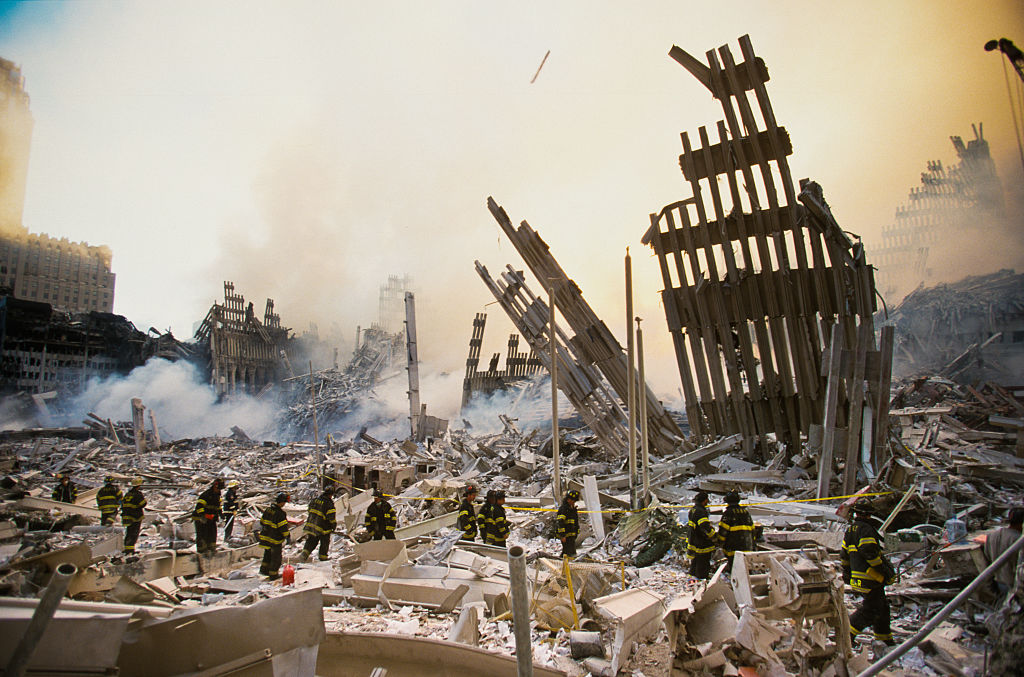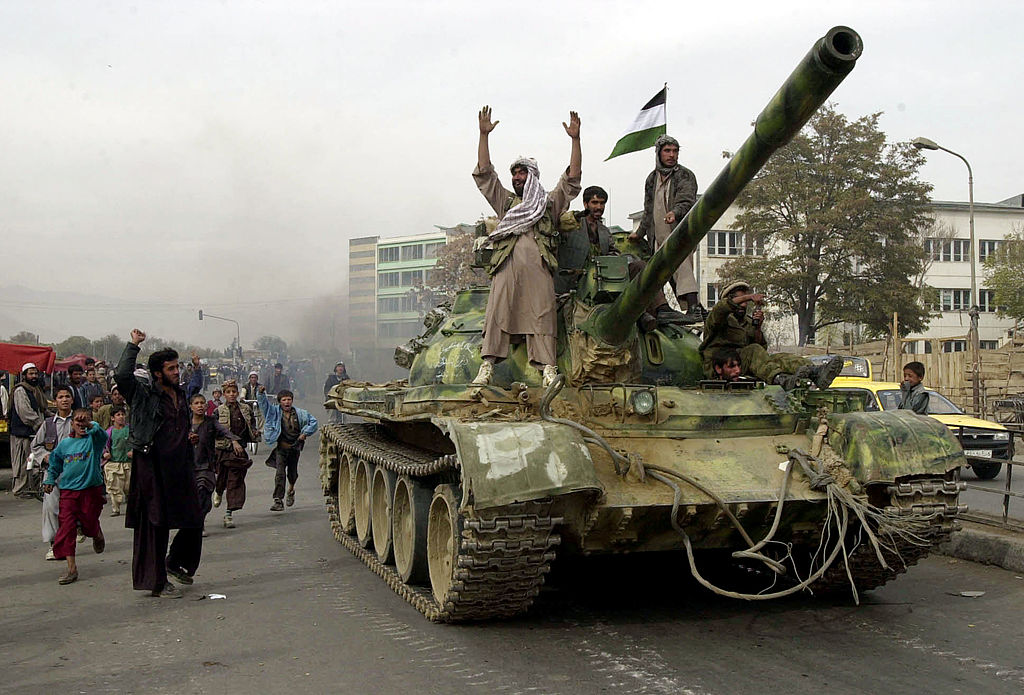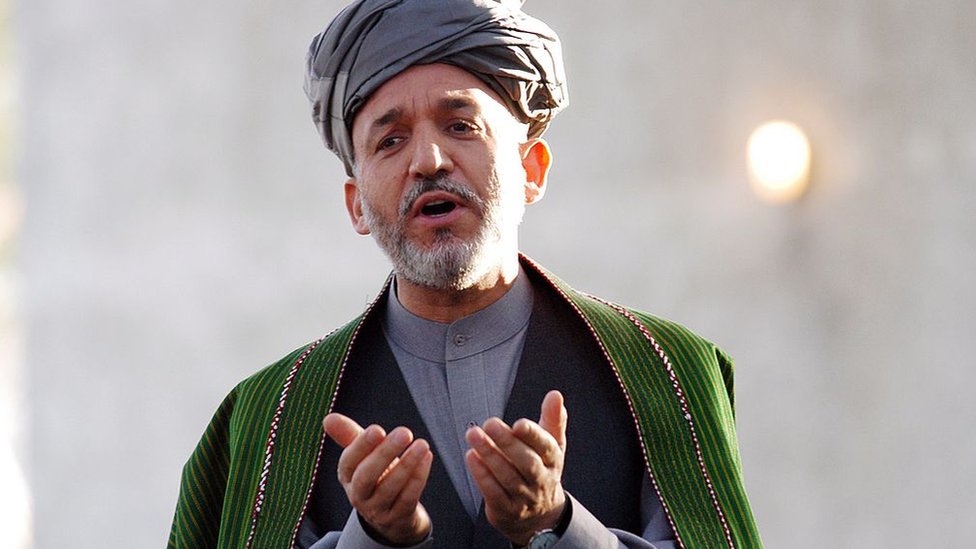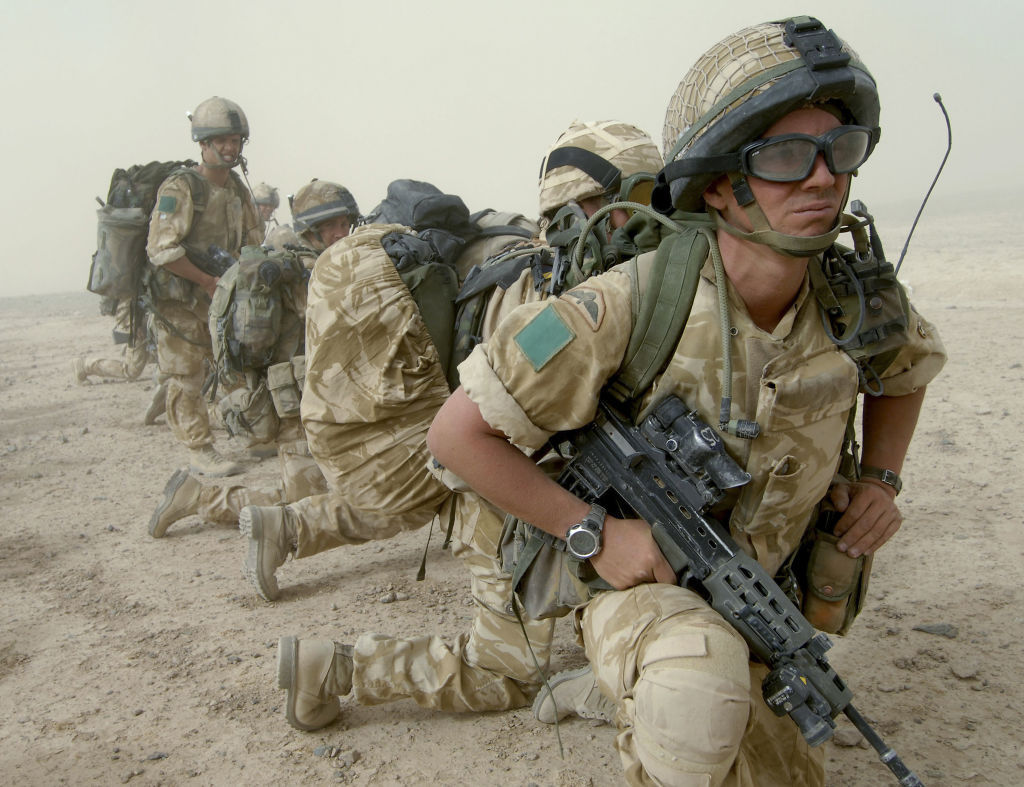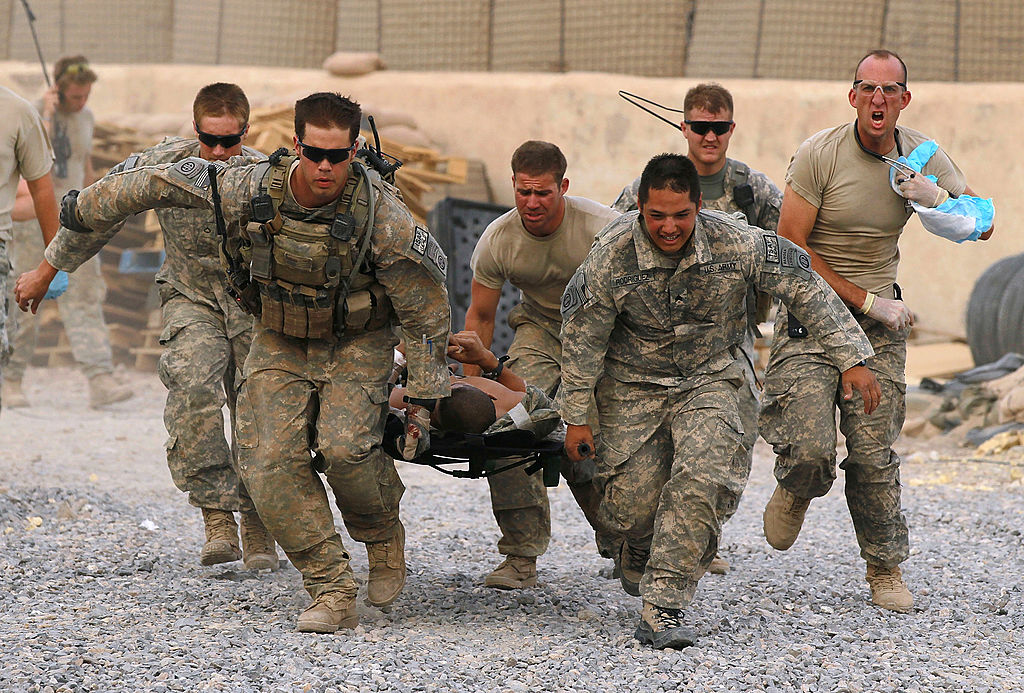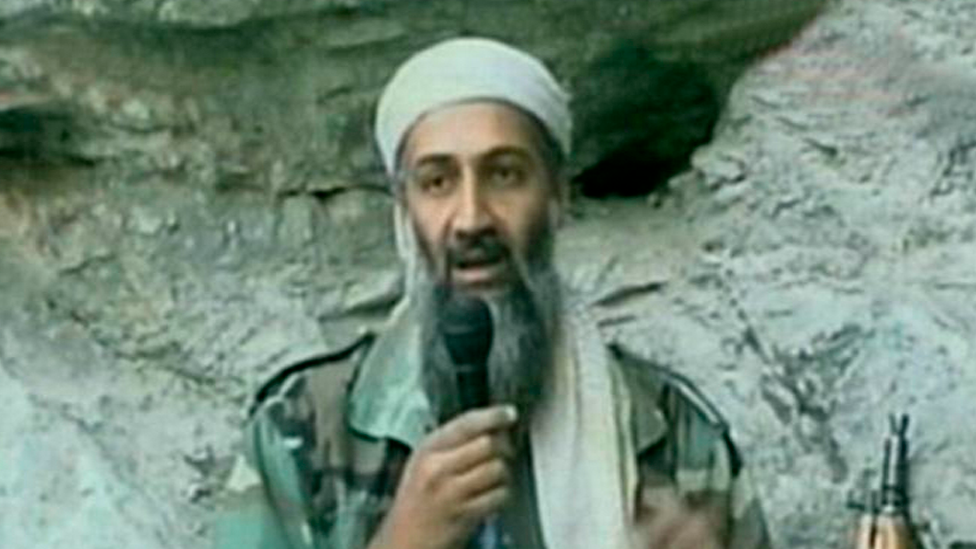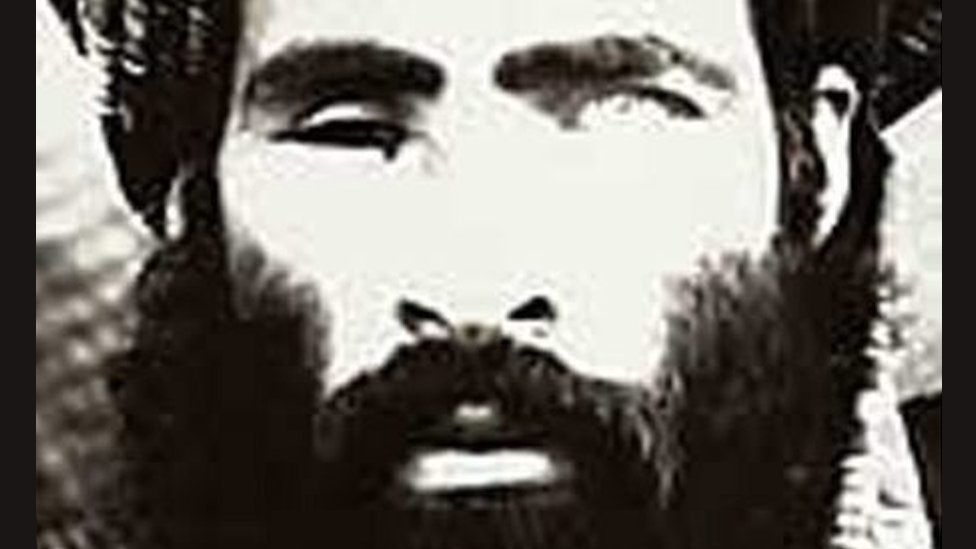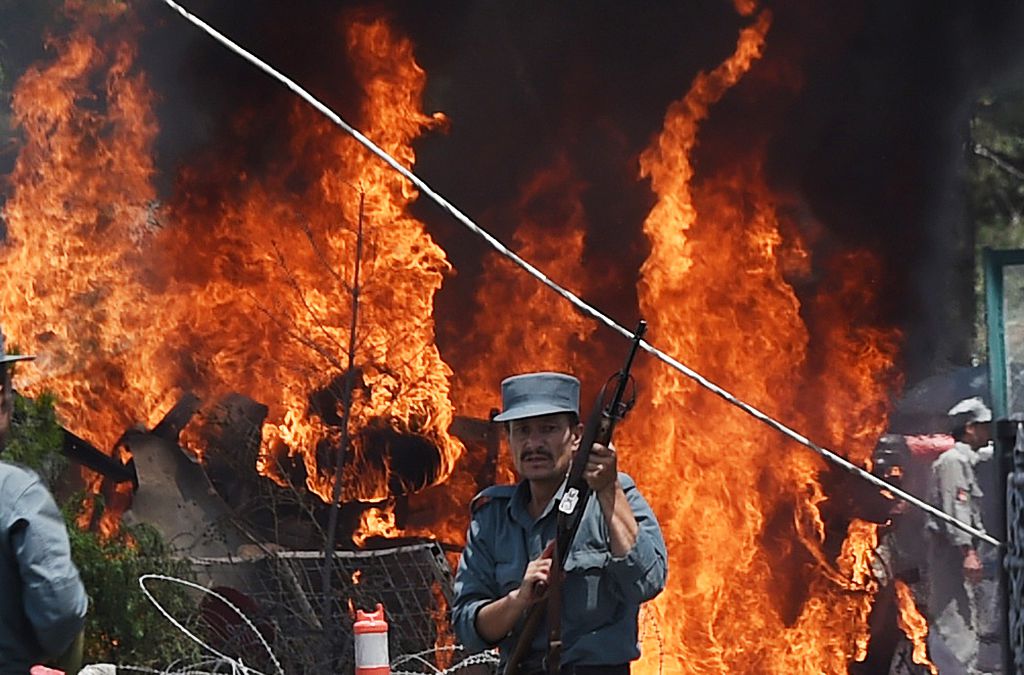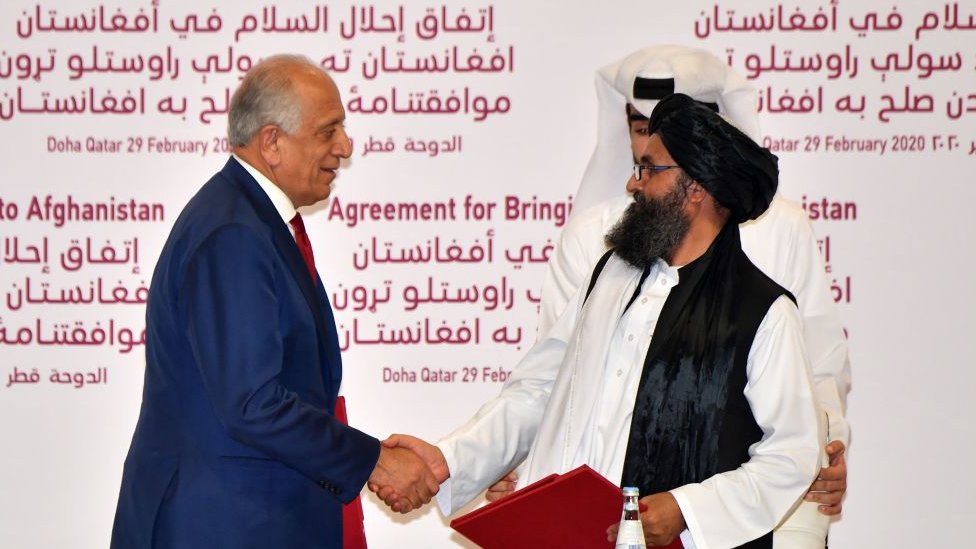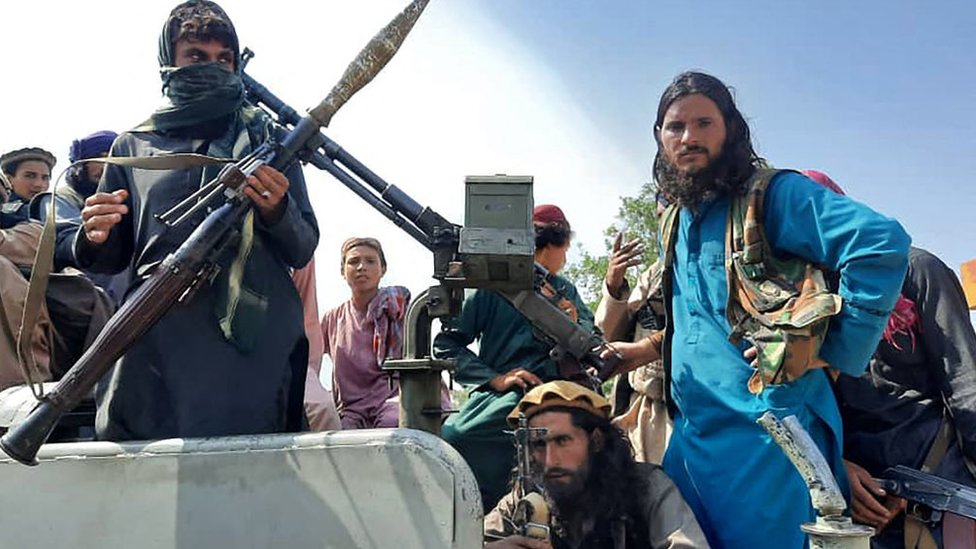The pilot who defected to the Taliban in his Black Hawk
- Published
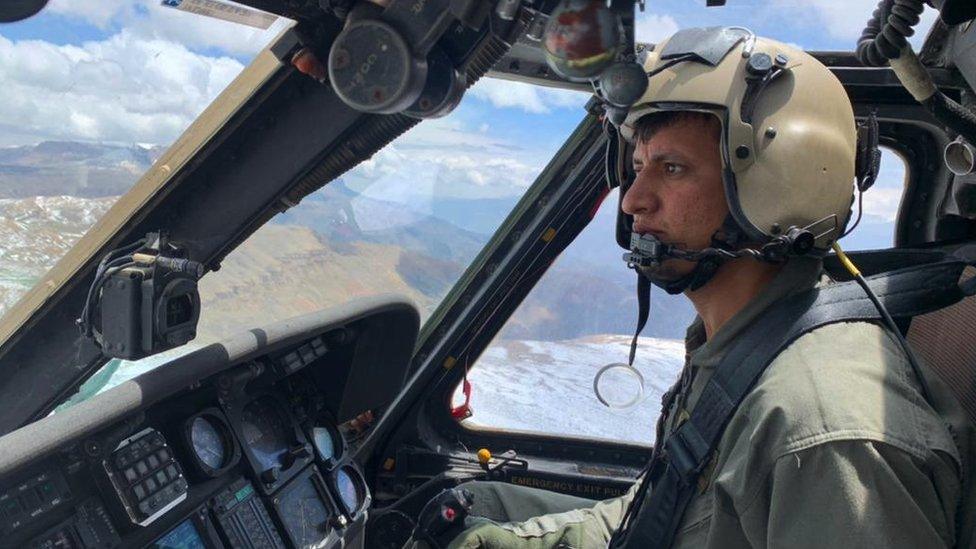
Mohammad Edris Momand is still flying sorties in the skies above Afghanistan - these days for the Taliban
"Some people may not be happy with me - but I tell them the country is like a mother and no one should betray it," says Mohammad Edris Momand.
He is among a small number of handpicked Afghan military pilots trained by the United States to defend his country in the years before it fell to the Taliban.
But when the Islamist fighters were poised to retake Kabul last year, he turned his back on his allies and flew to hand his helicopter to his former enemies.
He's thought to be the only pilot in the former Afghan military to have done so. "My aim was to protect an asset that belongs to Afghanistan," he told the BBC.
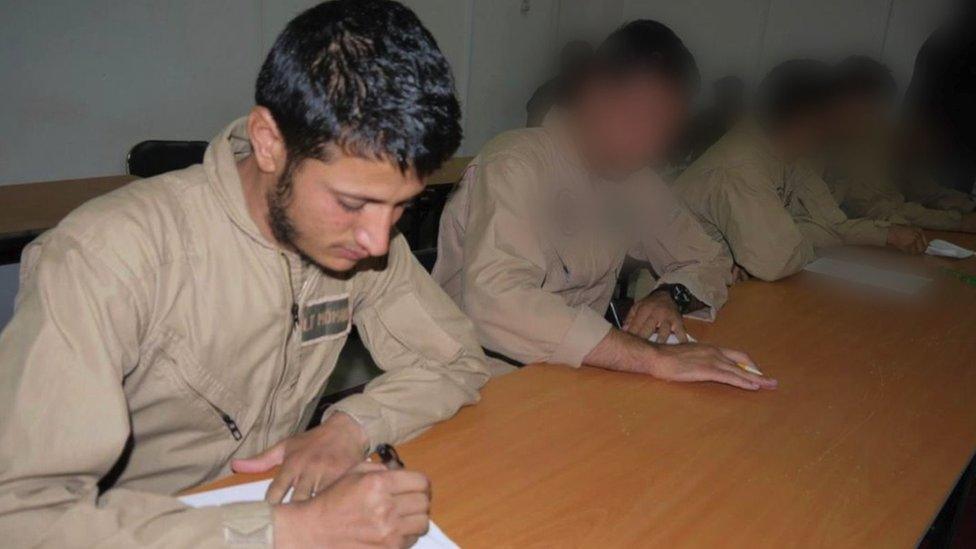
Momand was among a select group of pilots trained by the US
Momand joined the Afghan military in 2009 and left for the US to undergo a strenuous four-year training programme at the American Military Academy - known as West Point.
He was told that it costs as much as $6m (£4.97m) to train a helicopter pilot in the US. Momand values that opportunity and still cherishes the day he made his first sortie - or operational flight - in the US.
"I was very happy and excited. I could not believe such a day would come in my life," he said.
It wasn't until his training was over that he returned home and saw his family again.
Initially, he was deployed to Herat in western Afghanistan, where he flew Russian-built Mi-17 helicopters. A few years later he got another break.
"At the end of 2018, a small group of young pilots who had studied the latest air force technology were selected to fly Black Hawk helicopters. From then on I was flying Black Hawks."
These military helicopters were used in supply and transport roles.
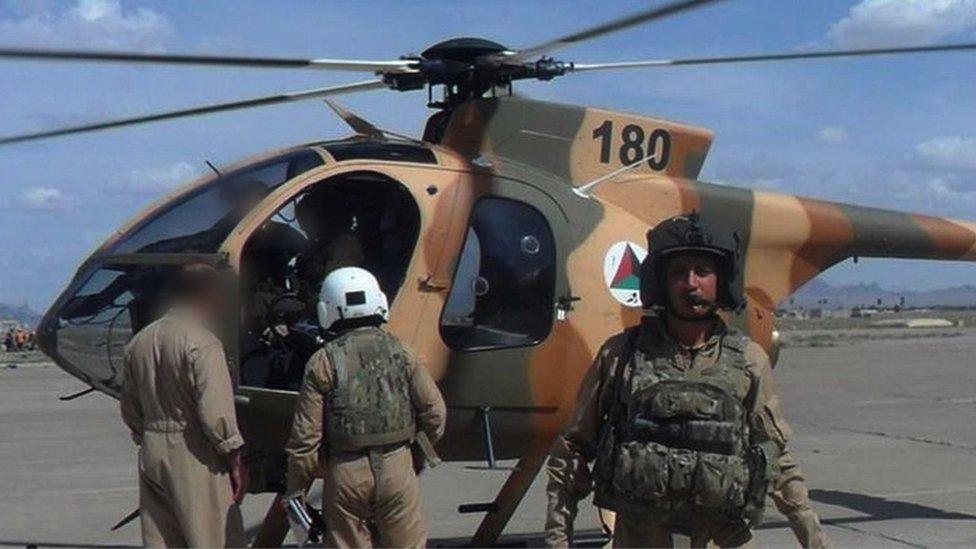
Momand flew a variety of helicopters in the Afghan air force
For years the US and its allies poured tens of billions of dollars into training and equipping the Afghan military, external in the hope it would be able to stave off the Taliban once foreign forces left.
But that hope turned into a pipe dream.
The Afghan army lost control of the country to the Taliban at an astonishing pace after President Biden gave a speech in April last year setting 11 September as the date the last US troops would leave the country.
In July, as Afghanistan slipped into chaos, the exit date had to be brought forward to 31 August. But even that was overtaken by the speed of the Taliban advance.
On 6 August, the first provincial capital was captured by the militants. One by one, other cities and towns fell to the insurgents, before the group took Kabul without a fight on 15 August.


The Afghan armed forces, trained and equipped at such expense, simply collapsed and many of the country's leaders fled, along with tens of thousands of other Afghans and foreigners.
President Biden criticised those Afghan government leaders who fled and said the country's military "gave up, sometimes without trying to fight".
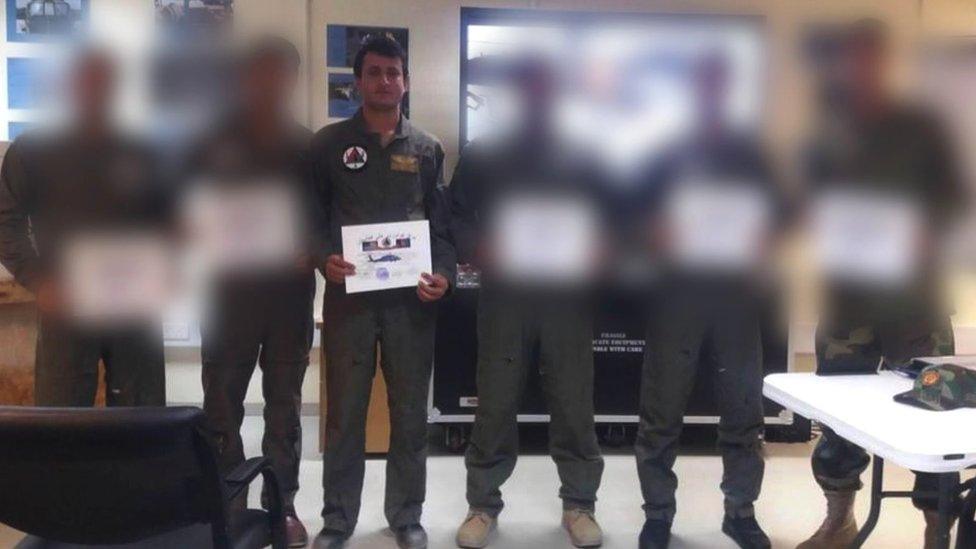
Momand says he will serve his country until his dying day
Momand is clear where his loyalty lay.
He recalls reporting for duty at Kabul airbase on 14 August. The situation was tense, with the Taliban at the gates of the capital. Rumours were swirling about top political and military leaders planning to escape.
The airport was under US military control, but how long it would remain secure was in doubt.
"Our air force commander ordered all the pilots to fly out. He directed us to go to Uzbekistan," Momand recalls.
He was angered by the instruction and decided not to obey it.
"My commander was urging me to betray my country, Why should I obey such an order?"
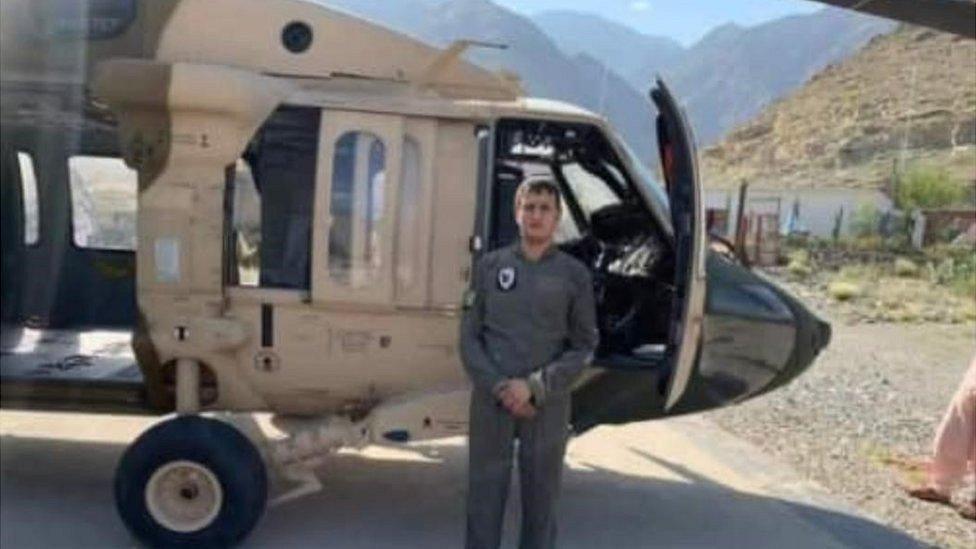
Momand says he took the helicopter to his village after consulting his father
Momand sought advice from his family. He says his father told him he'd never forgive him if he left the country and warned him: "The helicopter belongs to Afghanistan."
Momand's province, Kunar in the east, had already fallen to the Taliban. His father spoke to the group's local governor, who assured him that he would come to no harm if the helicopter was flown there.
Momand then came up with an escape plan - but first he had to ditch his crew.
"Every Black Hawk has a four-member crew. I knew I couldn't trust them with my plan. I was sure they wouldn't agree. They would have endangered my life and even destroyed the helicopter."
So he came up with a ploy to deceive them.
"I told the air force commander the helicopter had technical problems and I couldn't take off. When they heard this, all three crew members jumped aboard another helicopter which was being prepared to leave for Uzbekistan."
After all the other helicopters took off, he started his engine for a solo 30-minute flight to Kunar.
"The Americans were controlling air traffic control. So, I told them over the radio that I was taking off for Uzbekistan. After leaving the airport I switched off my radar mode and went straight to Kunar.
"I landed in my village close to my home. After getting assurances from the Taliban, I took the helicopter to a place where helicopters had been refuelled in the past."
His says his family, friends and neighbours fully supported his decision.
Momand says he has no regrets about his actions. He points out he'd had the option to leave Afghanistan with his wife and children, but had decided to stay.
"American advisers messaged me three times. They said, even if you can't bring the helicopter, come by road with your family members to get evacuated. But I didn't accept the offer."
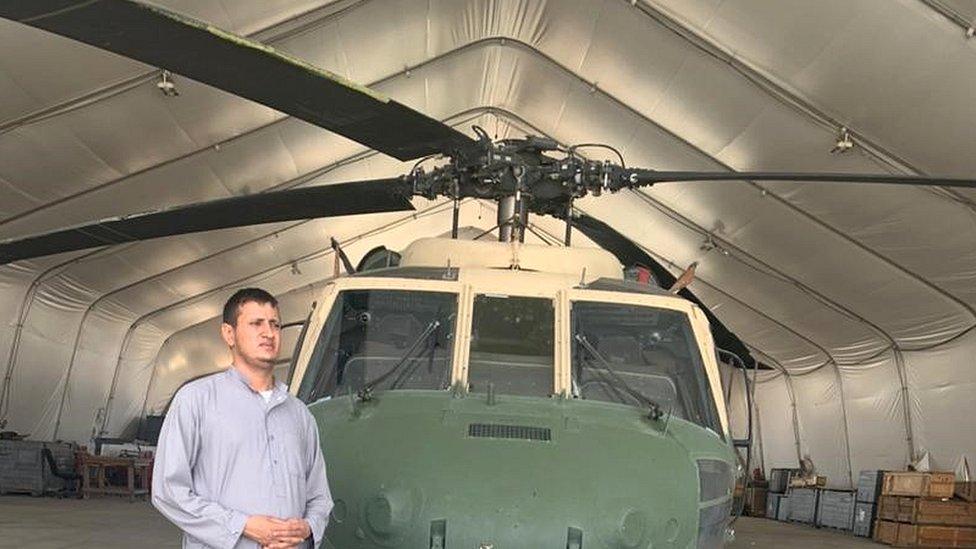
Momand, seen here in August 2022, says only seven Black Hawk helicopters are now operational
At the end of June 2021, the Afghan Air Force was operating 167 aircraft, including attack helicopters and planes, according to a report released by the US-based Special Inspector General for Afghanistan Reconstruction (Sigar).
Some of these air assets were flown out by Momand's colleagues. Analysis of satellite images of Uzbekistan's Termez Airport on 16 August shows it housing more than two dozen helicopters, including Mi-17s, Mi-25s, Black Hawks and several A-29 light-attack and C-208 aircraft.
American troops did what they could to sabotage most of the planes and helicopters left behind in Kabul.
It is not clear how many remain operational in Afghanistan today.
"We now have seven Black Hawk helicopters which are usable. Afghan engineers with limited resources were able to repair them. Step by step we will put other Black Hawk helicopters to use," Momand says.
Far from feeling that he abandoned his comrades, Momand blames them, saying they inflicted big losses on Afghanistan by blindly following the order to leave the country.
"Those who flew away with their helicopter to Uzbekistan actually let the country down. The helicopters belong to our country. They were very expensive. I don't think we will ever get them back."
Momand sees no contradiction in flying his highly prized Black Hawk for the Taliban, after being trained by the US to fight against the insurgents.
"Governments always change. People like us belong to the nation and serve the nation. The military should not get involved in politics. The country has invested a lot in people like me."
Even though the Taliban have been in power for a year, no country has formally recognised them as Afghanistan's legitimate rulers.
Despite this, Momand remains resolute.
"I will continue in my field to serve my nation until the last day of my life."
